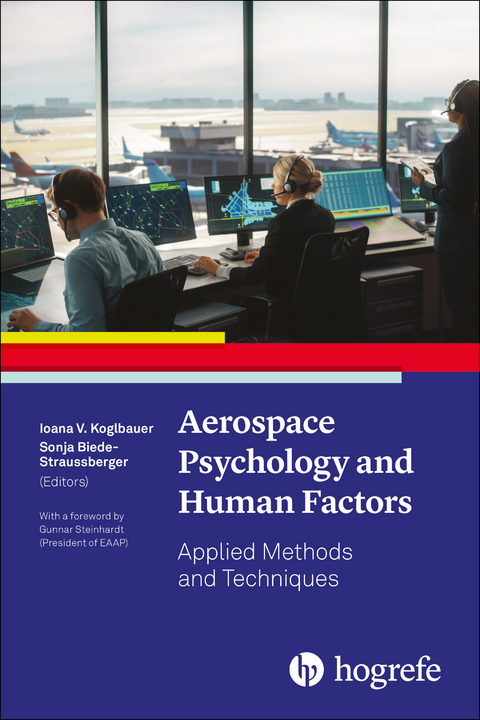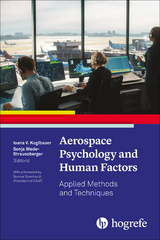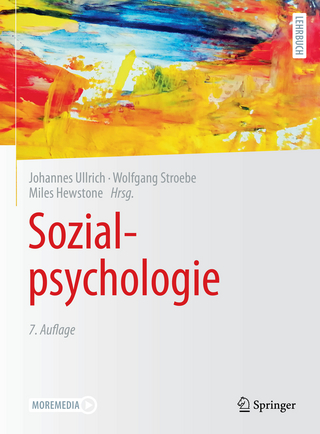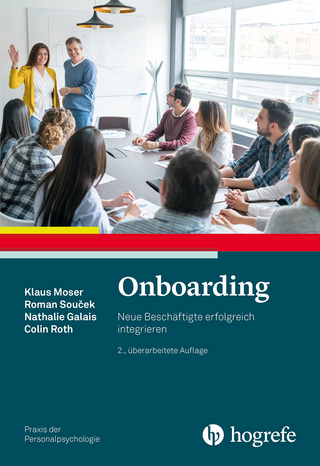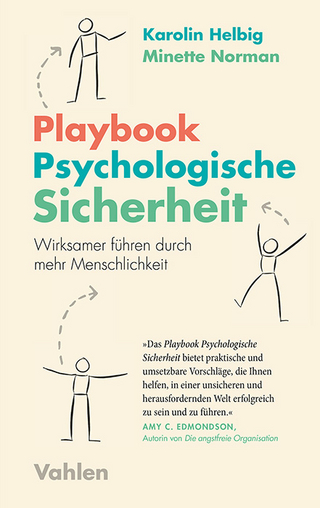Aerospace Psychology and Human Factors
Hogrefe Publishing (Verlag)
978-0-88937-647-2 (ISBN)
Explore the critical importance of integrating the human element in aerospaceBased on cutting-edge researchWritten by experts from academia and industryExplores the use of extended reality technologiesIn the face of evolving technological and societal challenges, this book delves into advanced techniques essential for integrating the human element in aerospace operations and development. Written by experts from academia and the aerospace industry, the volume explores powerful techniques for system safety engineering, innovative design approaches for cockpits, cabins, and space vehicles, and strategies for creating effective assistance systems and implementing artificial intelligence. Chapters present methods for studying typical hazards related to human operations in space, in the air, and on the ground. Additionally, the book explores the use of extended reality technologies (e.g., virtual, augmented, and mixed reality) to enhance operators' perceptions and explore uncharted territories in the universe. Proposals are also made for advancing industry standards and effectively integrating human and organizational factors within the aviation industry. This is an invaluable resource for practitioners, researchers and students interested in aerospace, as well as professionals from other safety critical domains (e.g., medicine, automotive, rail).
Ioana V. Koglbauer received her PhD and Habilitation in psychology from the University of Graz, Austria, and is an experienced aviation psychologist accredited by the European Association for Aviation Psychology. Ioana is affiliated with Airbus Defence and Space GmbH in Germany, and is also a lecturer at Graz University of Technology in Austria. She has led multiple research projects between academia and the aviation industry, and has authored numerous publications. In addition, Ioana served as an expert for various international organisations: The Civil Air Navigation Services Organization (CANSO) and the EASA Human Factors CAG. She was Editor-in-Chief of the peer-reviewed journal Aviation Psychology and Applied Human Factors and Member of the Board of the Directors of the European Association for Aviation Psychology for 4 years (2014-2018). Ioana is also a passionate pilot and instructor with experience in teaching human factors and safety for "Airline Transport Pilot" and "Type Rating Instructor" courses. Sonja Biede-Straussberger is an expert for cognitive psychology in the Human Factors and Ergonomics Department of Airbus Operations. She received her PhD in psychology in 2006, and holds a master's degree in educational science, both from the Karl Franzens University of Graz, Austria. Between 2003 and 2006, her studies with EUROCONTROL were focused on monotony in air traffic controllers, and then extended to the human integration in the global aeronautical system. Between 2009 and 2018 she led the Airbus human factors contribution to SESAR, endeavouring to give human operators a central role throughout the engineering cycle. Beyond that, she is actively involved in promoting human factors integration in the industry, such as the French Association for System Engineering or the European Association of Aviation Psychology. She holds a private pilot licence and taught human factors for student pilots as well as engineers. Today, she applies her expertise to continuously improving or developing new products by optimising the human factors contribution along all phases of cockpit design
Foreword
Preface
Chapter 1 Integrating Human Factors Into
the System Design Process
Brittany Bishop, Pauline Harrington, Nancy
Leveson, and Rodrigo Rose
Chapter 2
From Requirements to Cockpits - Considerations
on the Design Process
Christoph Vernaleken and Daniel Dreyer
Chapter 3
Applied Human Factors in Aircraft Cabin
Design
Thomas Muller and Hans-Gerhard Giesa
Chapter 4
Collect, Understand, Solve, Discuss, Do
- The Five Pillars of Assistance Systems
Daniel Dreyer and Alexander Rabl
Chapter 5
Designing System Explainability for Flight
Crew Denys Bernard and Sonja
Biede-Straussberger
Chapter 6
Situation Awareness, Workload and Performance:
New Directions Don Harris, Heikki
Mansikka, and Kai Virtanen
Chapter 7
Understanding Pilot Attention and Awareness
With Eye-Tracking
Mickael Causse, Julia Behrend, and Randall
J. Mumaw
Chapter 8
Safety Performance Indicators - Enabling a
Data-Driven Approach to Fatigue Risk Management
Systems Matthew J. W. Thomas
Chapter 9
Hazards of Human Space Exploration:
Research Methods
Cheryl Agyei, Anna Fogtman, Adrianos Golemis,
Tobias Weber, and Sylwia Kaduk
Chapter 10
CIMON - The First Artificial Crew Assistant
in Space Till Eisenberg, Gerhard Reichert,
Ralf Christe, Judith Irina Buchheim, Christian
Karrasch, and Ioana V. Koglbauer
Chapter 11
Applied User Research in Virtual Reality:
Tools, Methods, and Challenges
Leonie Bensch, Andrea Casini, Aidan Cowley,
Florian Dufresne, Enrico Guerra, Paul de
Medeiros, Tommy Nilsson, Flavie Rometsch,
Andreas Treuer, and Anna Vock
Chapter 12
Past, Present, and Future Trends in Aviation
for the Usage of Extended Reality
Christophe Hurter, Mickael Causse, and
Maxime Cordeil
Chapter 13
A Human Factors Approach for Evaluating
Virtual Reality Training in the Aeronautics
Domain Cedric Bach, Stephane Drouot,
Nawel Khenak, Anne-Claire Collet, Federico
Nemmi, and Florence Buratto
Chapter 14
Investigating Augmented-Reality-
Supported Flight Training Ioana V. Koglbauer,
Wolfgang Vorraber, Birgit Moesl, Harald
Schaffernak, and Reinhard Braunstingl
Chapter 15
How to Conduct and Interpret Meta-
Analyses Monica Martinussen and
Sabine Kaiser
Chapter 16
Single European Sky Air Traffic Management
Research Case Study: Where Have We
Been and Where Are We Going?
Adriana-Dana Schmitz and Ruben Rodriguez
Rodriguez
Chapter 17
Human and Organisational Factors Integration
in the Aviation Industry: Maturity
Analysis and Methodological Recommendation
to Answer Society Trends
Florence Reuzeau
| Erscheinungsdatum | 23.08.2024 |
|---|---|
| Verlagsort | Toronto |
| Sprache | englisch |
| Maße | 152 x 228 mm |
| Themenwelt | Geisteswissenschaften ► Psychologie ► Arbeits- und Organisationspsychologie |
| Medizin / Pharmazie ► Medizinische Fachgebiete ► Arbeits- / Sozial- / Umweltmedizin | |
| Technik ► Fahrzeugbau / Schiffbau | |
| Technik ► Luft- / Raumfahrttechnik | |
| Schlagworte | Aviation Psychology • aviation safety culture • Human factors in aviation |
| ISBN-10 | 0-88937-647-6 / 0889376476 |
| ISBN-13 | 978-0-88937-647-2 / 9780889376472 |
| Zustand | Neuware |
| Informationen gemäß Produktsicherheitsverordnung (GPSR) | |
| Haben Sie eine Frage zum Produkt? |
aus dem Bereich
